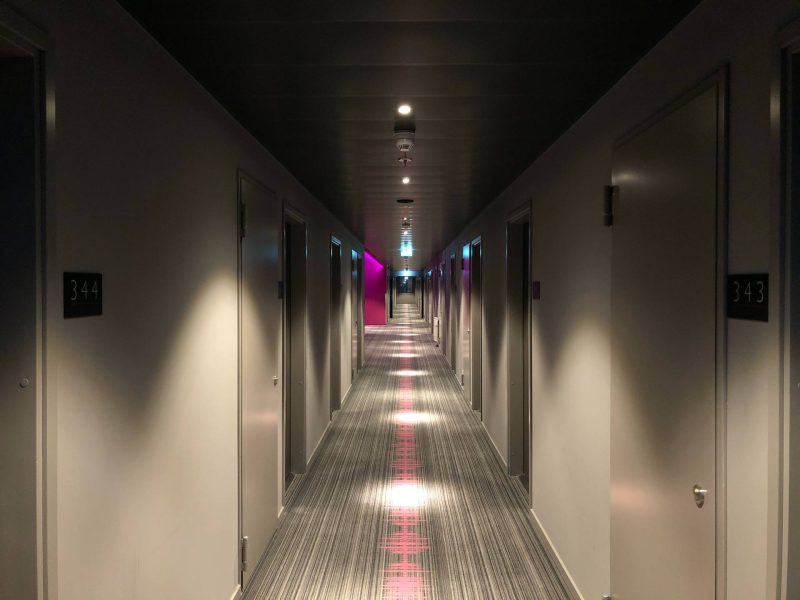5 tips for optimising revenue during low occupancy
Hotel owners face a significant challenge during low seasons and periods of low demand. In fact, reduced room bookings can not only lead to decreased revenue but also potential cash flow issues. To prevent these risks, it is important to implement revenue optimisation strategies that generate as much income as possible from available guests. In this resource, you’ll find 12 tips for optimising revenue during low occupancy and thus helping you maintain a stable financial position.

Consequences of low hotel occupancy
If you’re a manager or owner, you know it well: low occupancy rates can have significant negative consequences for hotels. Not only does low occupancy result in lower revenues, but it also presents potential cash flow issues. As a result, some properties find themselves facing difficulties when trying to over fixed costs. In fact, salaries, rent, mortgage payments and utility bills can present hotels with financial strain.
But in addition to the financial impact hotels feel during period of low occupancy, a hotel’s reputation and brand image can also be harmed. Facing hard times, your guests may begin to note a lack of activity or amenities at your property. This could lead to negative reviews, which can further reduce future bookings. Low occupancy can also lead to lower employee morale and job satisfaction, which can negatively affect a hotel’s quality of service and guest experience.
Reasons for low hotel occupancy
There are various reasons hotels face low occupancy, including off-season travel periods, economic downturns, natural calamities, and as we know too well, pandemics like the COVID-19 outbreak. However, low occupancy is not limited to specific times and may occur unpredictably.
For instance, you might find that your hotel in particular experiences low occupancy during weekdays or certain months when there are fewer events or festivals in the area. It is for this reason that hotel owners and managers must develop flexible strategies that can help sustain their operations even during low occupancy periods.

Tips for optimising revenue during low occupancy
The great thing about tourism and about the hotel industry is that in most cases (pandemics and natural disasters aside), there will be something you can do boost your sales. Optimising revenue during low occupancy is absolutely possible using some in-depth data and a little creativity.
In this article, we offer seven tips for optimising revenue during low occupancy, hopefully giving you some helpful methods to keep your hotel thriving during difficult times.
1. Anticipate your demand
If you’re looking at optimising revenue during low occupancy, you’ll need to start by anticipating your demand. Forecasting helps hotels predict future demand levels by using historic performance data, industry data, and other information. In gathering this information, your property will begin to make strong predictions and prepare for low occupancy periods.
Specifically, accurate forecasting will consider market circumstances as well as your property’s prior bookings, local events, rival hotel performance, and demand fluctuations. Using this information, your manager can make informed decisions about room rates, expenses, and target demographics.
Of course all of this can sound very overwhelming. Accordingly, most hotels use a revenue management system which can automate this lengthy process, providing up-to-date information for efficient planning.
To find out more about 1834 Hotels and the benefits of using their revenue management systems, click here.
2. Target loyal customers
Another very important strategy for optimising your revenue involves increasing loyalty with your existing customers. Looking at the data already available on your property management systems, come up with a strategy to target specific loyal guests. Breaking them down into groups based on their needs or characteristics will help you to create segments which you can target with relevant marketing content and emails. The needs and characteristics that you choose to target will depend on your hotel, as well as its location and the reason for low demand.
Let’s say you chose a few groups including that of retirees and middle aged business travellers. At this point you could start an email campaign for business travellers, reminding them of your relevant facilities and latest offers. You could also let your retiree customers know about the nearby hiking trails and lunch offers, presenting them with a reason to visit your region and thus, hotel.
Another way to target loyal customers is to communicate with those who visited exactly one year ago. It is possible that these particular people visited for an event or occasion, thus, reminding them about your hotel at this time could be helpful.

3. Focus on business travellers
When demand is low among leisure travellers (for example during the wet and wintery months) some of the shortfall can be made up by attracting more corporate travellers and business meetings or functions. Corporate travel is a continuously growing market, and business travellers are a useful demographic to attract, because they often return to the same areas multiple times.
What’s more, the rise of ‘bleisure’ – where business travellers extend trips for leisure purposes – means business travellers are also becoming even more valuable. It might be worth looking at the facilities you offer, such as potential co-working spaces or the quality of your in-room desks.
Lot of business travel takes place regardless of factors like the weather. So ensuring that your internet is fast and your corporate amenities are up to scratch, and then reminding your previous business guests about your property could increase your revenue.
4. Work with local operators or create packages
Tour operators sell package holidays and other package travel products, making it much easier for customers to make a booking. Hotels can also capitalise on low-demand periods by partnering with tour operators to attract specific kinds of guests. Is your hotel located in a city? Search for operators which organise city breaks and propose your property as a great addition to their tour. Consider where your hotel is located and what your typical audience is, and start making contact with those operators which align with your offerings.
Another thing that hotels can do to optimise their revenue during low occupancy involves partnering directly with local businesses and creating packages. Tourism is an industry built on experiences and those accommodation providers that offer more than a bed for the night will create more value for their properties.
Let’s say that your hotel is located on the banks of a river where the scenery and wildlife is abundant. Searching for local companies which offer boat tours, kayak hire or paddle board lessons, your hotel could decide to create river packages which offer accommodation and an included experience.
5. Reconsider your pricing strategy
When demand for your hotel rooms is low, the pricing strategy you adopt can be critical to success. During difficult times, charging lower room rates could help to attract price-sensitive customers, who may then choose your hotel over a competitor. However, low prices can also be detrimental during certain low demand periods.
For instance, if demand is very low, reducing the room rate may not work to attract any new customers but it can result in the guests who wanted to book anyway paying a lower rate. In addition to this, if you reduce prices too much, you can damage the value perception of your hotel and its services. Your property should focus on the value of its offerings. A race to the lowest price can reduce the perceived value of your hotel and cause damage which is later difficult to undo.

6. Optimise distribution channels
When business is slow at your hotel, it’s important to make it easy for potential guests to find you. It’s as simple as this: if you’re not on the main booking platforms, you’re reducing your chances of being found. Get your hotel listed on all the big channels, like online travel agents (OTAs), hotel metasearch engines, and global distribution systems and you’ll be on your way to optimising revenue during low occupancy.
But don’t just stop there. You should also make your hotel stand out from the competition. Alongside your listing, upload amazing photos, write a captivating hotel description, and make sure you highlight what makes your hotel unique.
And when you’re working with OTAs, keep an eye out for any special promotions or deals they might be offering. Some OTAs even allow you to pay for higher placement in their search engines or to target key demographics with ad campaigns.
Effective revenue management with 1834 Hotels
Optimising revenue during low occupancy doesn’t have to be difficult. With the right help, your hotel can thrive during low season and during periods of low occupancy.
1834 Hotels partners with Key Revenue Management software providers and provides management support to provide your hotel and manager with the tools, data and systems to effectively manage their hotel. Offering your manager the information they need to make educated decisions is the heart of 1834 Hotel’s strategy.
To find out more about 1834 Hotels and their expert revenue management services, click here.

